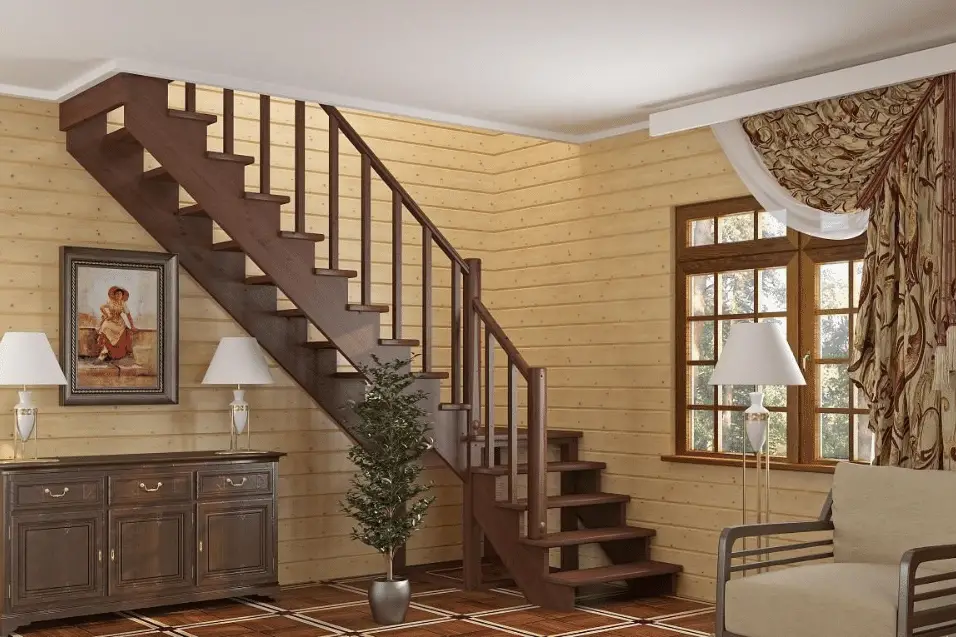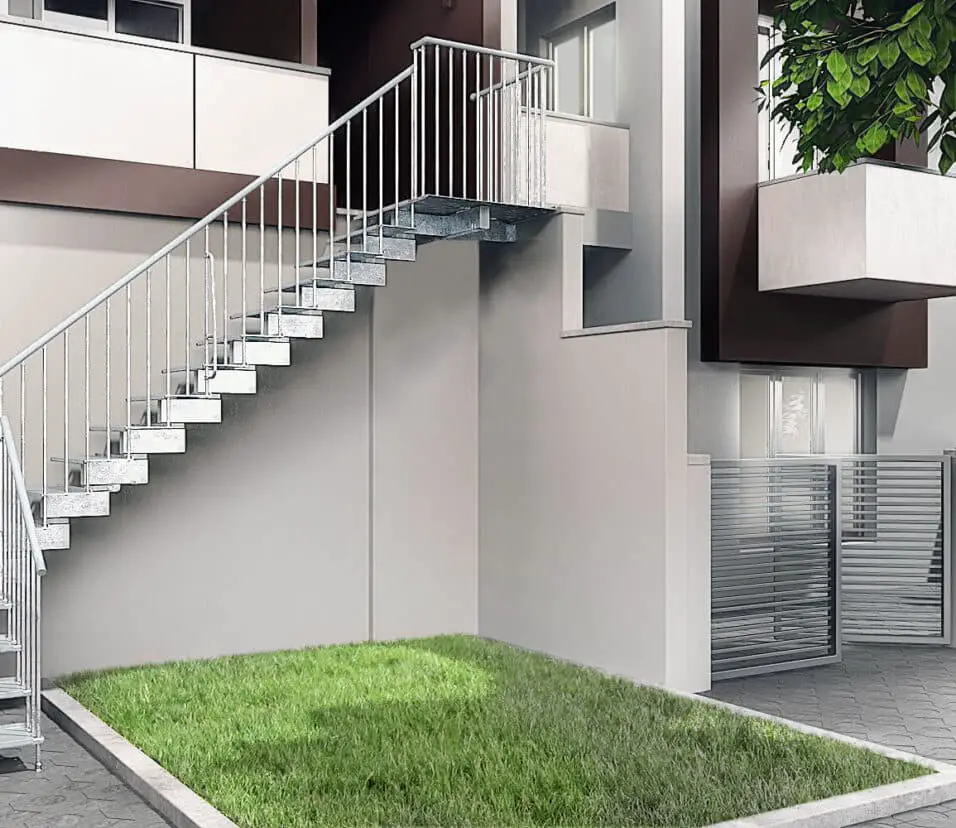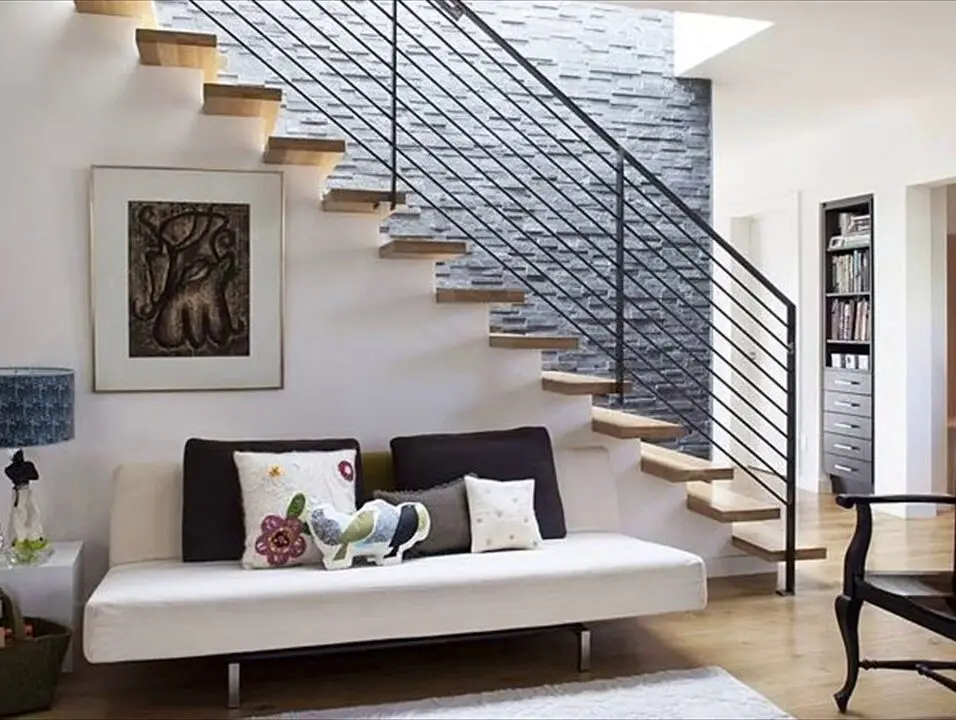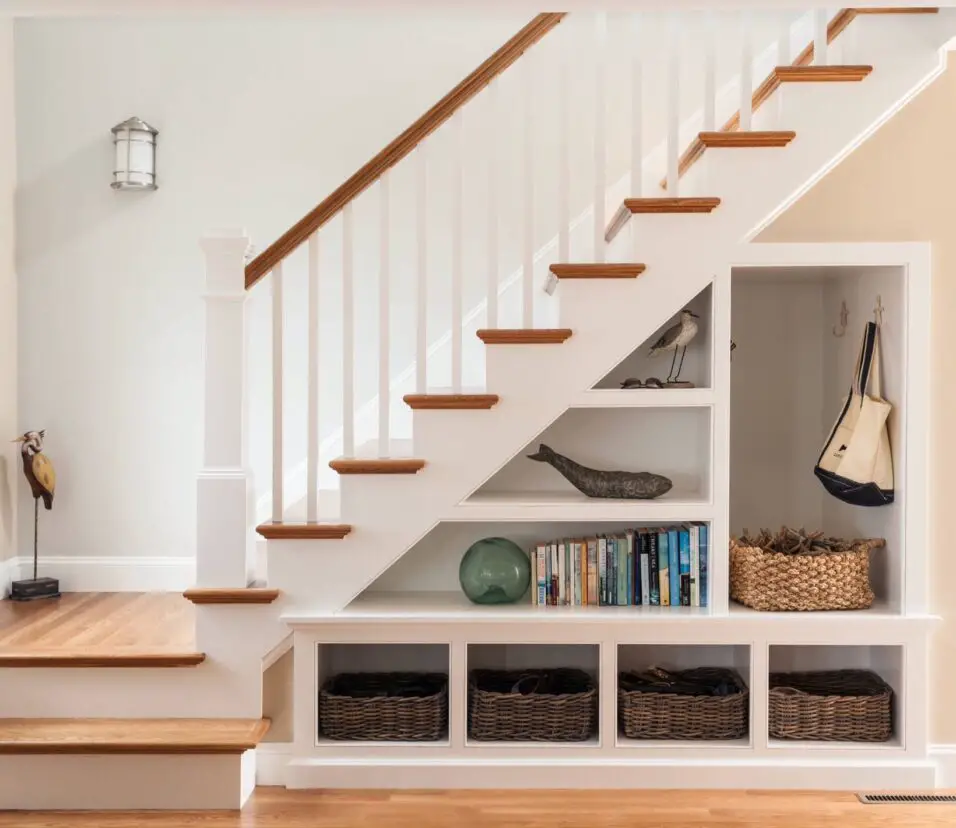How To Fix Steep Stairs In House
Introduction
How To Fix Steep Stairs In House: Steep stairs in a house can be both a practical challenge and a safety concern. Whether you’ve recently moved into a home with excessively steep stairs or you’re planning a renovation project that involves addressing this issue, this comprehensive guide is here to provide you with the knowledge and strategies needed to fix steep stairs in your house.
Steep stairs can make daily activities more daunting and pose a risk of accidents, particularly for young children, the elderly, or anyone with mobility issues. In addition to safety concerns, steep stairs can also limit the functionality of certain spaces in your home. Fortunately, there are various solutions and modifications that can be implemented to transform steep stairs inside into a safer and more accessible feature.
This guide will walk you through a step-by-step process of assessing the severity of your steep stairs, identifying potential risks, and exploring a range of remedies. Whether you’re considering adjusting the angle of the stairs, adding handrails, or completely reconfiguring the staircase, you’ll find valuable insights and expert advice to guide you through the process.
Addressing steep stairs not only enhances safety but also improves the overall usability and aesthetics of your home. From budget-friendly DIY options to more extensive renovation projects, this guide will equip you with the tools and information to make informed decisions and transform your steep stairs into a safe and functional element of your house. So, let’s embark on the journey of fixing steep stairs, ensuring that your home is not only beautiful but also accommodating and secure for all its occupants.
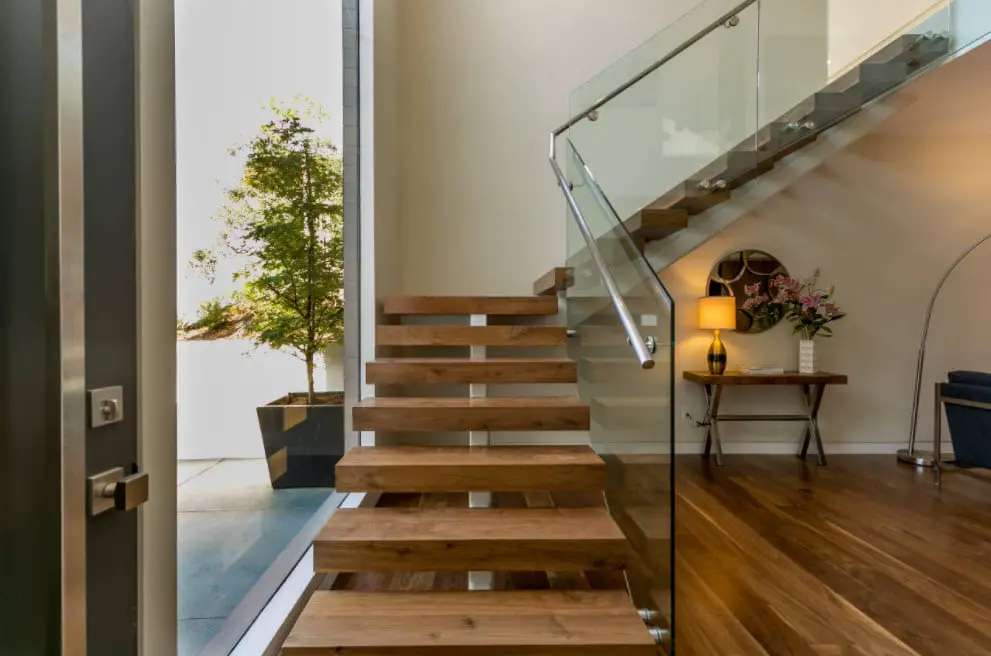
Can you fix stairs that are too steep?
However, if you have more room it’s an opportunity to expand the steps and make them less steep. Pad out the front of each step an inch or two, except the top one, and install new step treads. This can turn a steep-8 inch tread set of steps into a safer and more comfortable 11-inch tread staircase.
You can mend and make steep stairs safer using numerous methods, depending on the severity, space, and money. Common steep stair repair methods:
Rebuild the Stairs:
In cases where the stairs are extremely steep and pose a significant safety hazard, the best solution may be to tear down the existing stairs and rebuild them with a gentler slope. This involves redesigning and reconstructing the staircase with proper riser and tread dimensions to meet safety standards.
Install a Handrail:
Adding a handrail to steep stairs can significantly enhance safety. Handrails provide support and balance, making it easier for people to navigate the stairs safely. Make sure the handrail is securely anchored and complies with local building codes.
Add Stair Treads:
Installing non-slip stair treads or adhesive strips on the existing steps can improve traction and reduce the risk of slipping on steep stairs. This is a cost-effective solution that doesn’t require major construction.
Increase Tread Depth:
In some cases, you may be able to increase the depth of the stair treads, effectively reducing the steepness of the stairs. This can be done by extending the front edge of each tread.
Modify the Staircase Angle:
If space allows, you might consider modifying the angle of the staircase to create a more gradual ascent. This could involve expanding the staircase footprint or repositioning it within the space.
Seek Professional Guidance:
For complex or extensive stair renovations, it’s advisable to consult with a professional contractor or architect who specializes in stair design and safety. They can assess the situation and provide tailored solutions.
Remember that when fixing steep stairs, it’s crucial to adhere to local building codes and safety standards to ensure the resulting staircase is both safe and compliant.
How do you fix sunken stairs?
You can start by digging two holes on both sides of your staircase, creating enough room to fit in a jack on each side, as well as the extra height created by two small slabs of wood. Once you have that done, place one slab of wood under the stairs, then the jack on top. That will keep it from sinking into the soil.
Sunken or uneven staircases can be repaired for safety and functionality. Sunken stairs can result from foundation sinking, faulty construction, or wear and tear. How to remedy sunken stairs:
Identify the Cause:
Before attempting repairs, identify the underlying cause of the sunken stairs. It could be related to soil settling, water damage, or structural issues. Addressing the root cause is essential for a lasting fix.
Lift and Level:
One common method for fixing sunken stairs is to lift and level them using hydraulic jacks or piers. This involves lifting the affected steps to their original position and stabilizing them. It’s a precise process that may require professional assistance.
Replace Damaged Components:
If the sunken stairs have caused damage to the steps, treads, or risers, you may need to replace these components. Ensure that the new components are level and securely fastened.
Address Drainage Issues:
If water infiltration contributed to the sinking, address any drainage problems to prevent future issues. Ensure that water is directed away from the stairs and the surrounding area.
Install Supports:
To avoid future settling, concrete footings or piers may be needed beneath the stairs.
Re-Grade the Soil:
If soil settling is the primary cause, re-grading the soil around the stairs can help prevent future sinking. Compacted and well-draining soil is essential.
Regular Maintenance:
To prevent future sunken stairs, perform regular maintenance, including checking for signs of settling or damage and addressing any issues promptly.
It’s essential to consult with a structural engineer or a professional contractor experienced in foundation and stair repairs to assess the extent of the damage and determine the most appropriate repair method for sunken stairs.
What is the steepest safe stairs?
Building codes for stairs set the safe limit for the stair angle for different applications. OSHA regulations for industrial stairs allow a maximum of 45 degree stair slope. IBC requirements for egress stairs allow up to a 32.4 degree angle for the stair slope.
The steepest safe stairs are those that adhere to established building codes and safety standards, which vary by region but generally recommend the following guidelines:
Riser Height:
The maximum riser height (the vertical distance between two consecutive steps) is typically around 7.75 inches (19.7 cm). Building codes often allow a slight variation in riser height between steps, but consistency is key to safety.
Tread Depth:
The minimum tread depth (the horizontal distance from the front to the back of a step) is generally 10 inches (25.4 cm). Deeper treads provide more space for each step and reduce the risk of tripping.
Staircase Angle:
The angle of the staircase, often expressed as the stair’s “pitch,” is generally recommended to be between 30 to 40 degrees. This angle provides a balance between a comfortable ascent and descent while minimizing the risk of falls.
Handrails:
Stairs that are steeper or have more than a certain number of steps typically require handrails on one or both sides. Handrails should be positioned at a comfortable height and be securely anchored.
Landings:
Intermediate landings are needed to rest and minimize tiredness on lengthy staircases. Landings should be level and clear.
Headroom:
Adequate headroom clearance above the stairs is essential to prevent head injuries. The minimum clearance is usually around 6 feet 8 inches (203 cm).
It’s important to note that building codes can vary by jurisdiction, and it’s essential to consult your local building department for specific regulations that apply to your area. Additionally, while these are general guidelines for safe stairs, individual circumstances and user needs may require adjustments to these standards.
What is the safest angle for stairs?
Background: OSHA standard 29 CFR 1910.24(e), states: Fixed stairs shall be installed at angles to the horizontal of between 30 deg. and 50 deg. Any uniform combination of rise/tread dimensions may be used that will result in a stairway at an angle to the horizontal within the permissible range.
The safest angle for stairs, often referred to as the stair’s pitch, is typically recommended to be between 30 to 40 degrees. This range strikes a balance between a comfortable ascent and descent and minimizing the risk of falls. Here’s why this range is considered safe:
Comfortable Ascent and Descent:
Stairs with a pitch in the 30 to 40-degree range provide a comfortable and natural stride for most people. This means that users can climb and descend the stairs without feeling like they are overexerting themselves.
Reduced Risk of Tripping:
Steeper stairs with a higher angle can increase the risk of tripping and falling, especially when going downstairs. A pitch within the recommended range allows for safer transitions between steps.
Ease of Use:
Stairs with a moderate pitch are more user-friendly for individuals of varying ages and physical abilities. They are accessible to children, the elderly, and people with mobility challenges.
Compliance with Building Codes:
Many building codes and safety standards recommend a pitch within the 30 to 40-degree range for residential and commercial stairs. Adhering to these guidelines ensures that the stairs meet safety and regulatory requirements.
Balanced Aesthetics:
Stairs with a pitch in this range tend to have a balanced and aesthetically pleasing appearance, making them a popular choice for architectural design.
While most staircases are safe at 30–40 degrees, particular conditions and building requirements may need modifications. When planning or remodeling stairs, visit your local building authority or a design specialist because requirements and suggestions differ by location and building type.
How do you strengthen stairs?
If you need to strengthen the joint between the back of a tread and the bottom of a riser, squeeze some PVA glue into the gap. Then drive three evenly-spaced screws up through the tread and into the edge of the riser.
Strengthening stairs is essential to ensure their safety and longevity. Here are several methods for strengthening stairs:
Add Support Beams:
Install additional support beams or stringers beneath the stairs to distribute weight more evenly and reduce sagging. This is particularly important for longer or wider staircases.
Reinforce the Risers:
Secure risers (the vertical components between steps) by attaching them firmly to the stringers or framework. Use screws, brackets, or construction adhesive to ensure a strong connection.
Replace Weak Components:
Identify and replace any weak or damaged stair components, such as cracked treads or risers. Use sturdy materials like hardwood or pressure-treated wood for replacements.
Install Blocking:
Add blocking or braces between the stringers to prevent lateral movement and maintain the structural integrity of the stairs.
Upgrade Fasteners:
Use high-quality screws or bolts to secure treads and risers to the stringers. Ensure that fasteners are adequately sized and spaced for maximum support.
Use Angle Brackets:
Reinforce connections by adding angle brackets or corner braces where necessary. These metal brackets can help strengthen joints and prevent wobbling.
Add Handrails and Balusters:
Installing handrails and balusters (spindles) provides additional stability and support for users. Make sure they are securely anchored to the stairs and comply with local building codes.
Check for Rot or Insect Damage:
Inspect the stairs for signs of rot or insect damage, especially if they are made of wood. Replace any compromised components and consider using rot-resistant materials.
Apply Non-Slip Surfaces:
Enhance safety by applying non-slip stair treads or adhesive strips to the steps. This reduces the risk of slips and falls.
Regular Maintenance:
Implement a routine maintenance schedule to keep the stairs in good condition. Regularly inspect for wear, damage, or loose components and address any issues promptly.
What causes stairs to collapse?
Failure To Maintain Stairways Leads To Collapse
Loose or missing stair treads are not replaced; The supporting structure is warped or slipping; Risers are shifting out of the support structure; or. Wooden steps are rotted or decayed.
Stairs can collapse for several reasons, most of which are related to structural deficiencies or improper construction practices. Common causes of stair collapse include:
Overloading: Excessive weight or load on the stairs beyond their design capacity can lead to collapse. This can occur when too many people use the stairs simultaneously or when heavy objects are transported on them.
Poor Construction: Inadequate construction practices, such as using subpar materials, improper fastening, or insufficient support, can weaken the structural integrity of stairs.
Rot or Decay: For wooden stairs, rot or decay due to moisture or insect damage can compromise the strength of the components, leading to collapse.
Inadequate Maintenance: Neglecting maintenance and repairs can allow structural issues to worsen over time, increasing the risk of collapse.
Stair collapse can happen from a damaged or unstable foundation or subfloor.
Wear and Tear: Gradual wear and tear, including worn-out treads, loose connections, or corroded fasteners, can weaken stairs and eventually lead to failure.
Poor Design: Unsafe stairs may collapse due to structural problems.
Extreme Weather or Natural Disasters: Severe weather events, such as floods, earthquakes, or hurricanes, can damage or weaken stairs, causing them to collapse.
To prevent stair collapse, it’s crucial to adhere to building codes, use quality materials, and employ proper construction techniques during installation. Regular inspections, maintenance, and addressing any structural issues promptly are also essential for ensuring the safety and stability of stairs.
How do you fix a gap between stairs and walls?
Between a staircase and a wall you’re supposed to have a piece of trim called a skirtboard to fill that gap. It functions like a baseboard to keep peoples’ shoes & feet from scuffing up the walls.
Fixing a gap between stairs and walls is essential not only for aesthetics but also for safety and energy efficiency. Here’s how to address this issue:
Assess the Gap:
Determine the cause and size of the gap. It could be due to settling, expansion and contraction of materials, or poor initial construction.
Fill with Caulk:
For small gaps, use a paintable acrylic caulk that matches the color of the wall and stairs. Apply the caulk to the gap, ensuring it fills the space completely. Smooth it with a putty knife for a clean finish.
Install Backer Rod:
For larger gaps, consider using a backer rod before applying caulk. Flexible foam backer rods support caulk in the gap. This prevents the caulk from sinking into the gap.
Apply Expanding Foam:
Expanding foam insulation can fill large gaps. This not only seals the gap but also provides additional insulation. Be sure to use foam designed for this purpose and follow the manufacturer’s instructions.
Reattach Trim:
If the gap is between the stairs and trim or molding, remove the trim and reattach it securely using finishing nails or adhesive.
Trim or Molding:
In some instances, you may opt to add or replace trim or molding to cover the gap. This can provide a decorative and functional solution while addressing the gap issue.
Address Structural Issues:
If the gap is due to structural settling or movement, it’s crucial to address the underlying structural issue. Consult with a professional contractor or structural engineer to assess the problem and implement necessary repairs.
Paint or Finish:
Once the gap is sealed, paint or finish the area to match the surrounding surfaces for a seamless appearance.
Remember that fixing a gap between stairs and walls is not only about aesthetics but also about preventing drafts, moisture infiltration, and potential pest entry. It’s essential to choose the appropriate method based on the size and cause of the gap and to ensure a secure and lasting solution.
What is the maximum stair riser height?
9.5 inches
Standard Stair Riser Height
Standard stairs must have a maximum riser height of 9.5 inches (24 cm) following OSHA 1910.25(c)(2). IBC 1011.5. 2 stipulates that the minimum and maximum stair riser heights must be 4 inches (10.16 cm) and 7 inches (17.78 cm), respectively.
The maximum stair riser height, as regulated by building codes in many regions, is typically around 7.75 inches (19.7 cm). However, this measurement can vary depending on local building codes and safety standards, so it’s essential to consult your specific jurisdiction’s regulations.
Building codes are in place to ensure the safety and comfort of stair users. The maximum riser height is designed to prevent excessively steep stairs, which can increase the risk of tripping and falling. By limiting the height of each riser, stairs become more user-friendly and provide a consistent and safe ascent or descent.
In addition to the maximum riser height, building codes often specify a minimum tread depth, handrail height, and other requirements to ensure stair safety and compliance. When planning or constructing stairs, it’s crucial to follow these regulations and consult with your local building department to ensure that your stairs meet all relevant code requirements. This ensures that your stairs are both functional and safe for everyone who uses them.
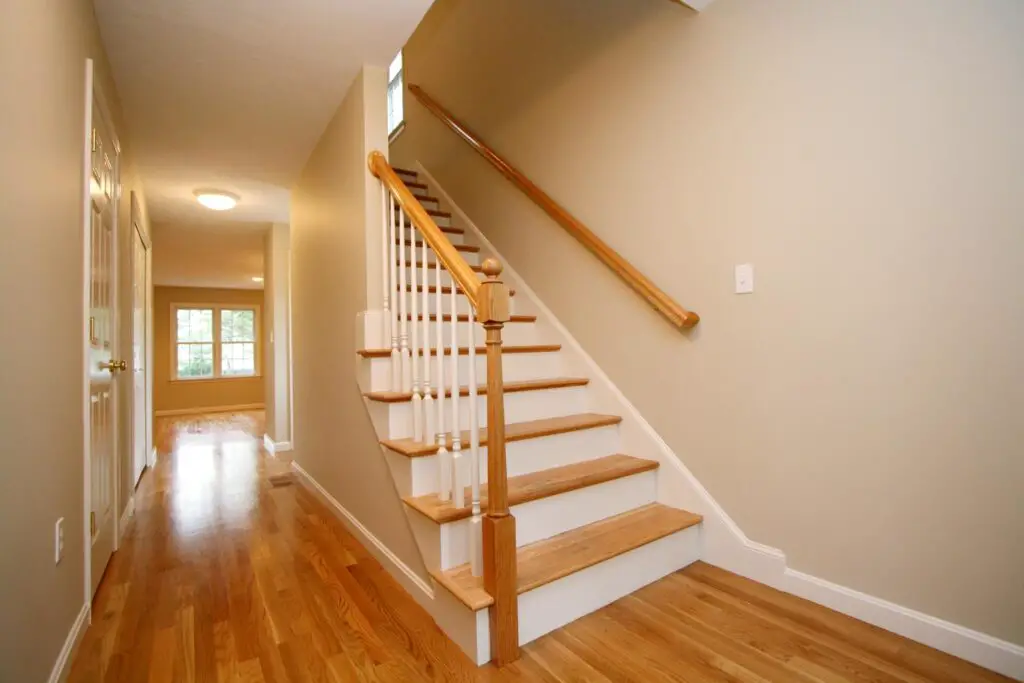
Conclusion
Addressing and fixing steep stairs in your house is a transformative journey that prioritizes both safety and functionality within your home. Steep stairs can present challenges and potential risks to household members, making it essential to take proactive measures to rectify this issue. Throughout this comprehensive guide, we’ve explored various solutions and strategies to help you navigate the process of fixing steep stairs effectively.
The safety of your loved ones is paramount, and by taking steps to mitigate the risks associated with steep stairs, you’re creating a secure environment within your home. Whether you choose to modify the angle of the stairs, install handrails, or undertake a more extensive renovation, you’re investing in the well-being and convenience of your household members.
Furthermore, addressing steep stairs doesn’t just enhance safety but also adds value to your home. A well-designed and accessible staircase can improve the overall aesthetics of your living space and increase its market appeal.
As you embark on the journey of fix steep stairs, remember that there’s no one-size-fits-all solution. Your approach may vary based on factors such as budget, the severity of the steepness, and your personal preferences. This guide has equipped you with the knowledge and insights needed to make informed decisions and implement the most suitable remedies.
In the end, fixing steep stairs is about transforming a potential hazard into an asset within your home. It’s about ensuring that everyone can move freely and confidently while enjoying the comfort and security of their living space. By addressing steep stairs, you’re not only enhancing the functionality and safety of your home but also creating a more welcoming and inclusive environment for all who enter your doors.




